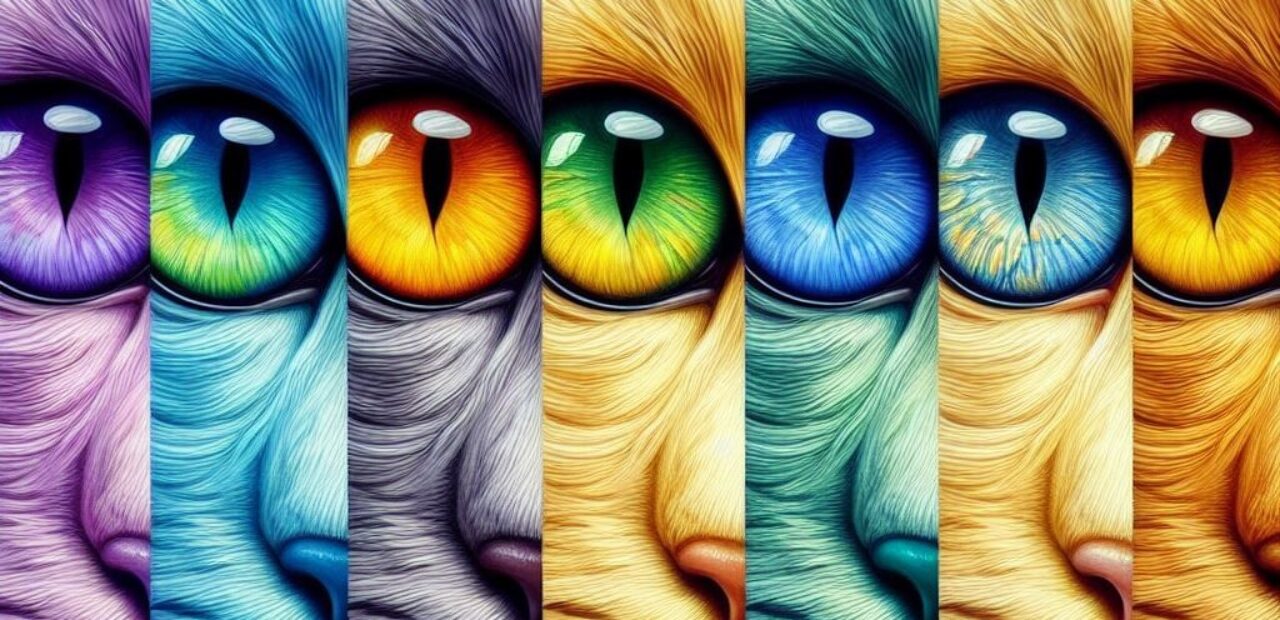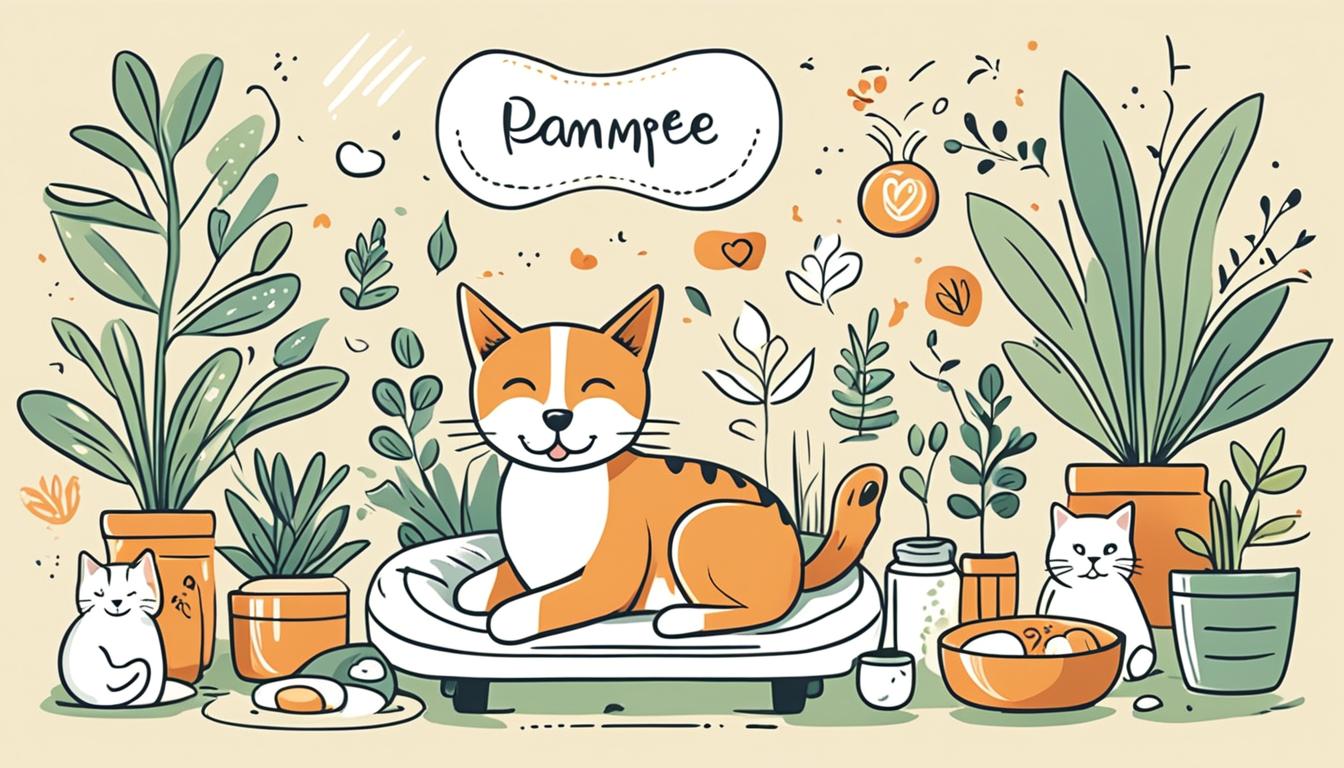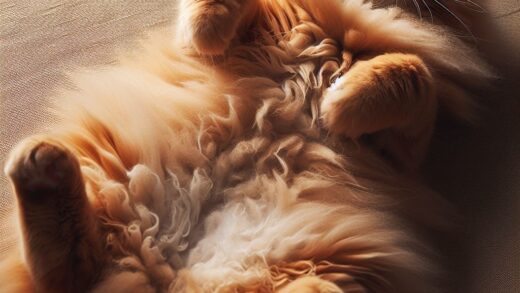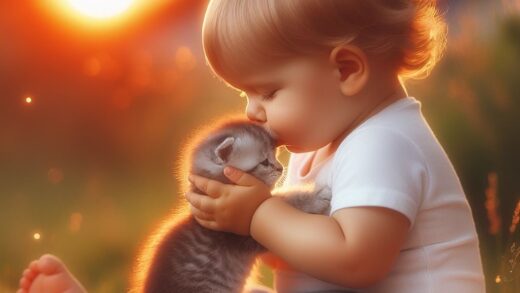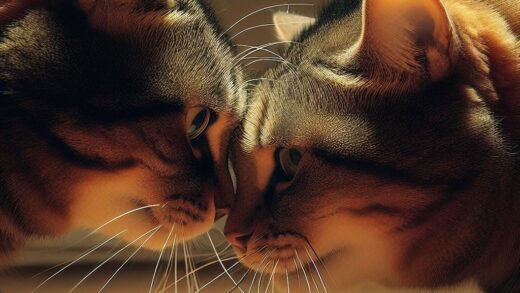Cat Eye Colors Unraveled: Genetics, Personalities, Health Issues
Cat eye colors are intricately linked to genetic mutations, driving unique hues in different breeds. Common colors like green, yellow, and blue contrast with rarer shades such as orange, brown, and copper. Eye color does not dictate a cat’s personality; myths associating eye color with specific traits are anecdotal. Health risks like deafness in blue-eyed cats and sun-related issues in light-eyed cats highlight the importance of vigilant monitoring and veterinary care. Aging may bring changes in eye color due to melanin production alterations. Understanding these factors illuminates the complexities of cat eye colors, revealing deeper genetic, personality, and health connections.
Key Takeaways
- Genetic mutations influence cat eye colors, leading to common hues like green and rare colors such as copper.
- Eye color does not determine a cat’s personality; individual temperaments vary regardless of eye color.
- Blue-eyed cats are more susceptible to deafness, while light-eyed cats face higher risks of sun-related issues.
- Aging can cause changes in eye color due to shifts in melanin production, necessitating monitoring for health concerns.
- Understanding the genetic basis of eye colors aids in recognizing health risks and taking necessary precautions for cat care.
Cat Eye Color Genetics
In understanding cat eye colors, delving into the intricate realm of cat eye color genetics is essential for unraveling the fascinating genetic mechanisms that dictate the hues found in feline eyes.
Eye color inheritance patterns are governed by a complex interplay of genetic mutations, determining the color variations observed. Different breeds exhibit specific tendencies towards certain eye colors, showcasing the influence of breed genetics on ocular pigmentation.
Genetic mutations can lead to unique and rare eye colors, contributing to the diverse palette seen in cats. Understanding these genetic underpinnings provides insight into the hereditary nature of eye color and sheds light on the mechanisms that drive the expression of different hues in cats’ eyes.
Common Vs. Rare Eye Colors
The variation in cat eye colors encompasses a spectrum ranging from commonly observed hues like green, yellow, and blue to rarer shades such as orange, brown, and copper. Eye color rarity and inheritance play crucial roles in determining the diversity and significance of cat eye colors. The table below illustrates the distribution of common and rare eye colors in cats:
| Common Eye Colors | Rare Eye Colors |
|---|---|
| Green | Orange |
| Yellow | Brown |
| Blue | Copper |
Understanding the prevalence of these eye colors in cats can provide insights into their genetic makeup and the inheritance patterns that contribute to the captivating array of feline eye colors.
Personality Myths Debunked
Following the exploration of common and rare cat eye colors, it is pertinent to address and dispel prevailing myths surrounding the correlation between feline personalities and eye color.
One prevalent myth revolves around blue-eyed cats being more affectionate. However, scientific evidence does not support this claim. Personality traits are not determined by eye color, as each cat’s behavior is influenced by a multitude of factors.
While some may perceive green-eyed cats as mysterious and yellow-eyed cats as energetic, these characterizations are anecdotal and not rooted in scientific research. It is crucial to understand that a cat’s eye color does not definitively dictate its personality traits.
Therefore, it is essential to appreciate each cat as an individual with a unique temperament, regardless of their eye color.
Health Risks and Eye Color
Exploring the intersection of cat eye colors and health, it is imperative to delve into the correlation between specific eye colors and potential associated risks.
Cats with blue eyes are more susceptible to deafness, particularly in breeds like the Siamese. Light-eyed cats, such as those with green or yellow eyes, are at a higher risk of sun-related issues like ocular melanoma due to their reduced melanin protection.
It’s essential for cat owners to be aware of these risks and take precautions to protect their feline companions, such as limiting sun exposure and providing regular vet check-ups. Monitoring changes in eye color and seeking prompt veterinary care can help detect and address any underlying health concerns early on.
Aging and Eye Color Changes
Upon entering the later stages of feline life, changes in eye color may manifest as a result of the natural aging process. Age-related shifts in eye color are common among older cats, often due to alterations in melanin production within the iris. These changes can lead to variations in eye hues, such as a fading of vibrant colors or a darkening effect. It is essential for cat owners to be aware of these age-related shifts and monitor their cat’s eye color over time. Additionally, behavior changes may accompany these alterations, indicating potential health concerns that require veterinary evaluation. Below is a table summarizing common age-related eye color changes in cats.
| Age-Related Eye Color Changes | Description | Potential Implications |
|---|---|---|
| Fading of Vibrant Colors | Bright hues becoming dull | Normal aging process |
| Darkening Effect | Light eyes getting darker | Increased melanin production |
| Color Variation | Changes in eye hues | Natural aging process |
Heterochromia and Genetics
In the intricate realm of feline genetics, the phenomenon of heterochromia emerges as a captivating trait characterized by distinct eye colors within individual cats. Genetic mutations play a crucial role in heterochromia, leading to unique inheritance patterns that result in one eye being a different color from the other.
This condition can be seen in various breeds, with some cats displaying striking combinations such as one blue eye and one green eye. Famous cats like Venus, known for her one blue and one green eye, showcase the intriguing nature of heterochromia.
Studying these unique heterochromia cases not only sheds light on the genetic underpinnings of eye color variation but also highlights the fascinating diversity present in the feline world.
Environmental Influences on Eye Color
Environmental factors play a significant role in influencing the eye color of cats, contributing to the overall diversity observed within feline populations. Diet effects can impact eye color, as certain nutrients and vitamins play a role in eye health and pigmentation. For instance, a deficiency in specific nutrients may affect the intensity or brightness of eye color.
Climate can also influence eye color, as exposure to varying levels of sunlight and UV radiation can impact the production of melanin in the iris, potentially altering eye color over time. Understanding how environmental factors such as diet and climate interact with genetics can provide insights into the intricate mechanisms that determine feline eye color variations.
Eye Color Warning Signs
Factors influencing feline eye color extend beyond environmental influences to include warning signs that indicate potential health issues related to the eyes. Sudden changes in eye color, especially when accompanied by behavior changes, can serve as red flags for underlying health problems. Cats with sudden alterations in eye color may be experiencing issues like inflammation, infection, or even systemic diseases affecting the eyes.
Behavior changes such as increased squinting, pawing at the eyes, or avoiding bright lights alongside noticeable changes in eye color could signal serious health implications. Any abrupt changes in eye color warrant prompt evaluation by a veterinarian to rule out potential eye-related concerns and ensure the overall well-being of the feline. Regular eye examinations are crucial in maintaining a cat’s ocular health.
Frequently Asked Questions
Can a Cat’s Eye Color Change Due to Emotional or Mood Changes?
Emotional impact on a cat’s eye color change is not scientifically proven. Mood influence does not lead to iris transformation. Eye color changes can be due to genetics, aging, health issues, or environmental factors.
Are There Any Superstitions or Myths Surrounding Cats With Different Eye Colors?
Folklore and legends often attribute mystical qualities to cats with different eye colors. Superstitions view them as omens, with each hue carrying symbolic meanings. These beliefs reflect cultural interpretations of feline traits and contribute to the fascination surrounding cats.
Do Certain Eye Colors Make Cats More Prone to Specific Allergies or Sensitivities?
Certain eye colors in cats may indicate genetic predispositions to specific allergies. Understanding how eye color changes may relate to emotions can aid in detecting health concerns early. Regular vet check-ups are crucial for monitoring these potential sensitivities.
Can a Cat’s Diet or Nutrition Affect Their Eye Color or Eye Health in Any Way?
Nutrition impact on eye color is minimal as genetics primarily dictate this trait. However, diet effects on eye health are significant. Nutrients like vitamin A and omega-3 fatty acids support eye function. Consult a vet for tailored dietary advice.
Are There Any Cultural or Historical Beliefs Associated With Cat Eye Colors in Different Societies?
Cultural beliefs and historical connections around cat eye colors vary globally. In some societies, specific eye colors are linked to luck, protection, or mystical powers. Understanding these perceptions sheds light on diverse perspectives within different cultural narratives.
